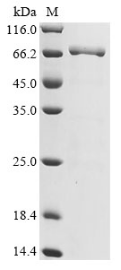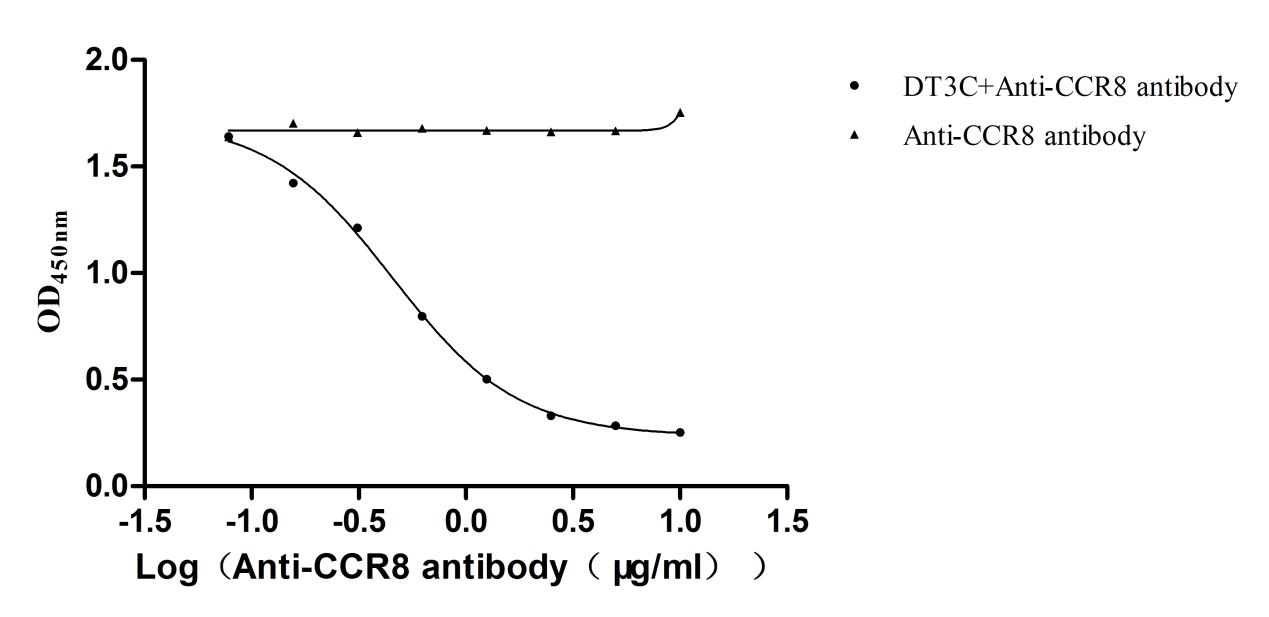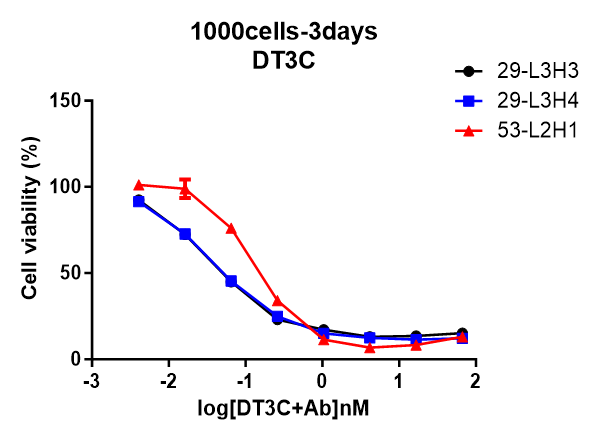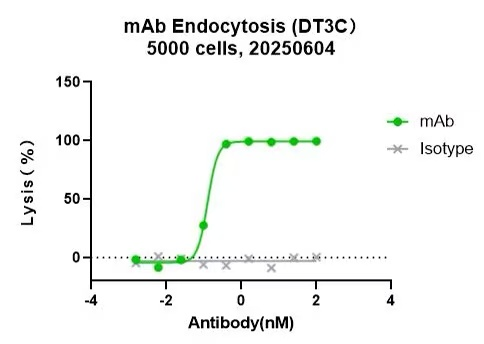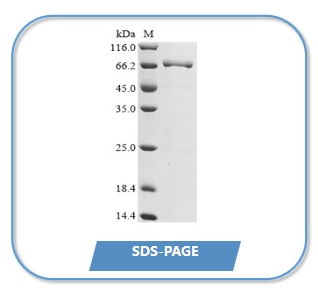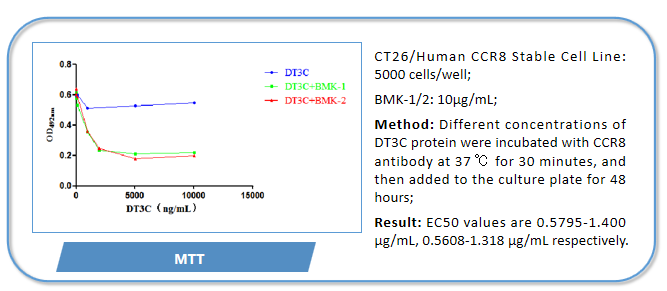The recombinant DT3C protein was produced by expressing a DNA fragment encoding the catalytic and translocation domains of the Corynephage beta diphtheria toxin (DT) (33-417aa) fused with the Streptococcal protein G-derived 3C domain (291-497aa) in E.coli. The 6xHis-tag sequence was placed in the N-terminus of the DT3C encoding sequence. The resulting recombinant DT3C protein consists of diphtheria toxin (DT) lacking the receptor-binding domain but containing the C1, C2, and C3 domains of Streptococcus protein G (3C) [1]. The purity of the recombinant DT3C protein was assessed using SDS-PAGE, demonstrating a purity level of up to 90%. On the gel, DT3C migrated as a band with an approximate molecular weight of 69.4 kDa.
The rationale behind designing the recombinant DT3C protein stems from the cytotoxic property of diphtheria toxin, which inhibits the protein translation machinery in cells, and the Fc-binding domain (3C), capable of binding to any IgG antibodies across different species [1][2]. It binds to a mAb to form a mAb-DT3C conjugate after incubation at room temperature, which functions in vitro similarly to an antibody-drug conjugate (ADC), delivering the cytotoxic effects of diphtheria toxin specifically to targeted cells. Moreover, the mAb-DT3C conjugate serves as a tool to assess the efficiency of mAb internalization by cells by monitoring the extent to which it induces cell death. Additionally, the recombinant DT3C protein facilitates the evaluation of cancer cells' internalization efficiency of the mAb in vitro, aiding in the screening process for more effective monoclonal antibodies.
References:
[1] Hamamichi, S., Fukuhara, T., et al. Novel method for screening functional antibody with comprehensive analysis of its immunoliposome [J]. Sci Rep 11, 4625 (2021).
[2] Miki Yamaguchi, Yukari Nishii, et al. Development of a sensitive screening method for selecting monoclonal antibodies to be internalized by cells [J]. Biochemical and Biophysical Research Communications, Volume 454, Issue 4, 28 November 2014, Pages 600-603.

